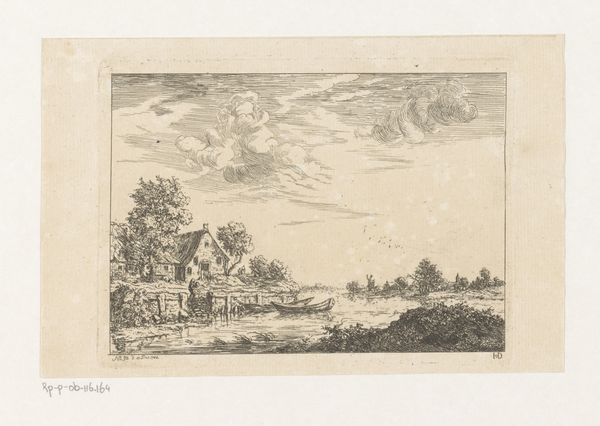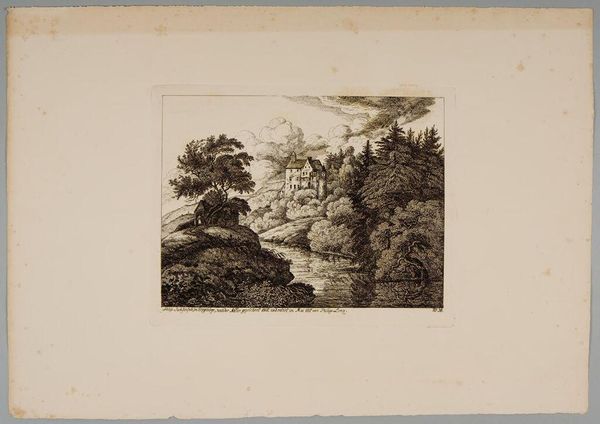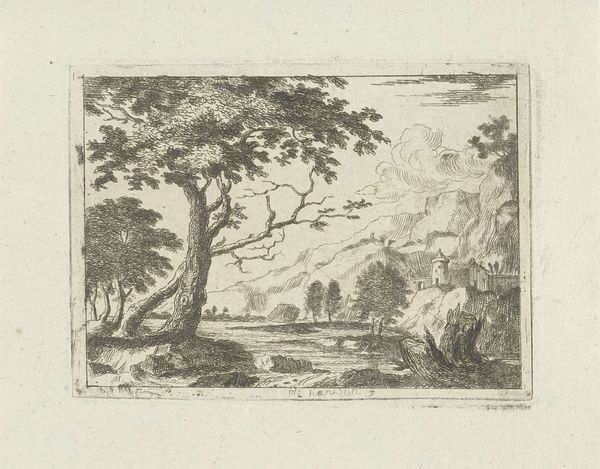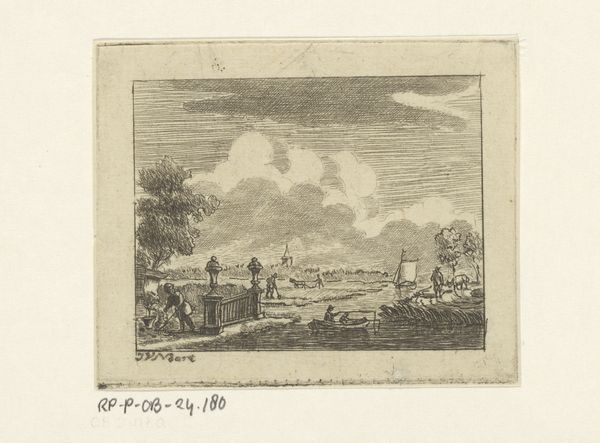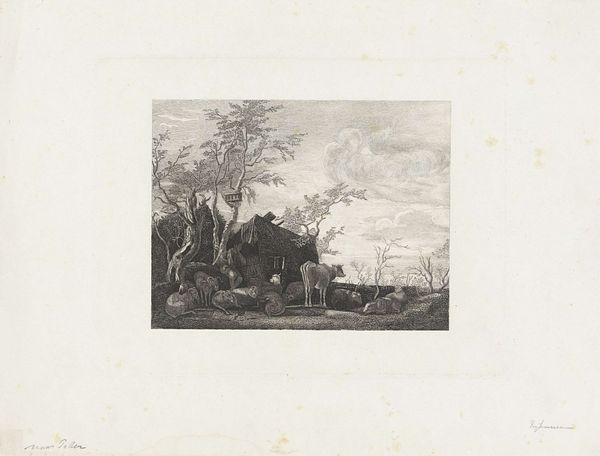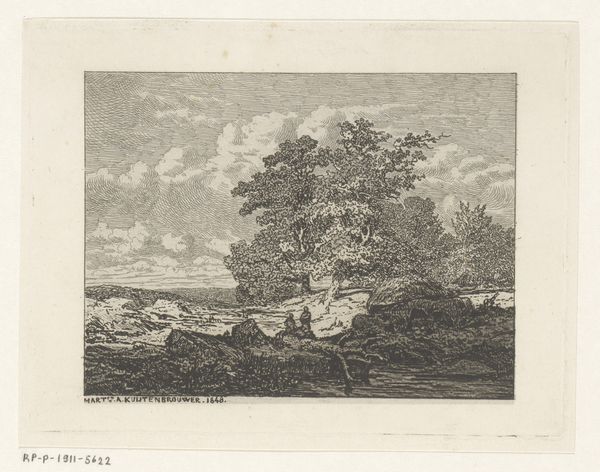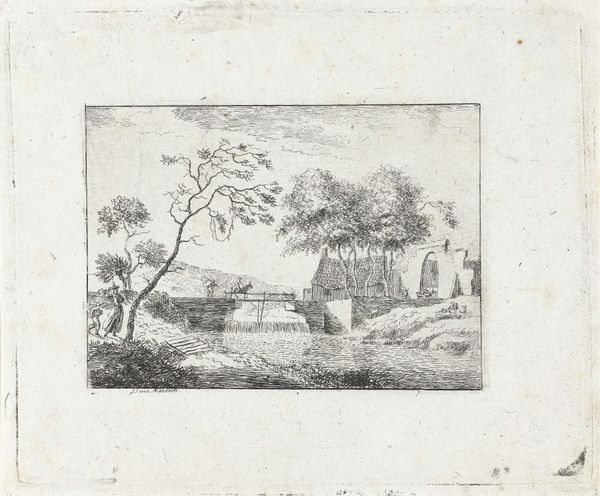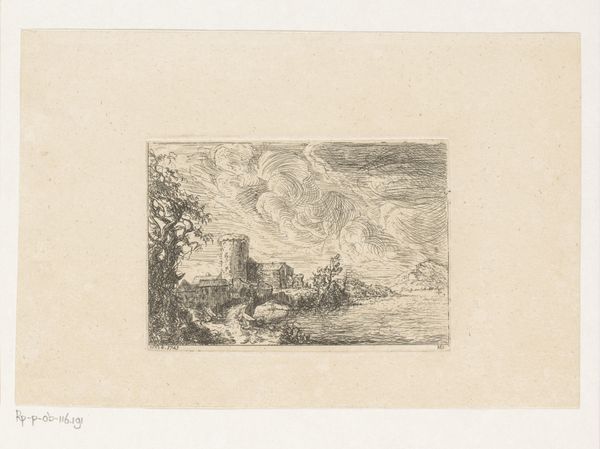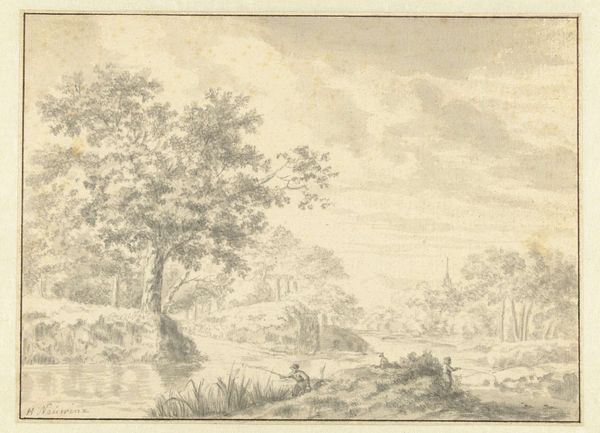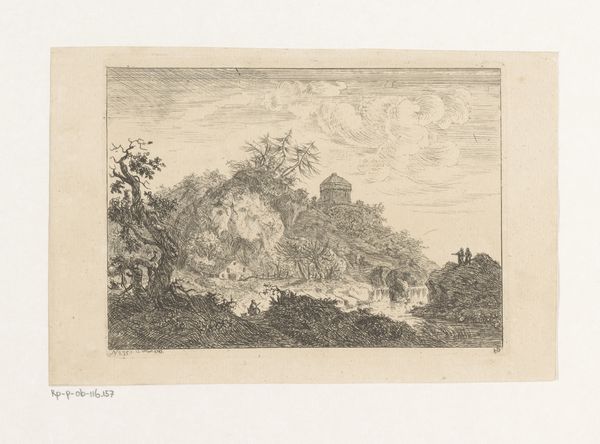
Dimensions: height 76 mm, width 88 mm
Copyright: Rijks Museum: Open Domain
Editor: This etching, "River View with a Haystack," by Hendrik Hoogers, likely created between 1757 and 1814, gives me a sense of quiet industry, a tranquil, working landscape. What strikes you when you look at it? Curator: I’m drawn to how it presents a specific vision of Dutch identity in that era. It idealizes rural life, but this idealization needs critical examination. Who benefited from this idyllic image? The art erases the labor and social inequalities inherent in agrarian society, doesn't it? How might those displaced by land enclosures, for example, have viewed this scene? Editor: That's interesting. I hadn't thought about who is absent from the picture. So you're suggesting that it presents a curated view of the countryside? Curator: Precisely. Think about the rise of capitalism during this period and how art played a role in shaping perceptions of land and ownership. These seemingly innocent landscapes reinforced existing power structures. Does it not also create a yearning or perhaps even a false desire for something unattainable? Editor: It really challenges my initial assumption about its peacefulness. It's interesting how an image can hide a whole set of social dynamics. What do you notice about the technique used? Curator: Etchings, as a medium, were more accessible and reproducible. It brings the question of accessibility to mind – who was consuming these images, and how did they contribute to the construction of national identity? The detailed linework almost romanticizes hard labor. It prompts us to question: Who is this artwork for? Editor: This has completely changed how I see it. It's not just a pretty picture; it’s a loaded representation of social power and ideology. Curator: Exactly! And questioning those representations is key to a critical understanding of art history. Editor: I'll never look at a landscape the same way again!
Comments
No comments
Be the first to comment and join the conversation on the ultimate creative platform.
